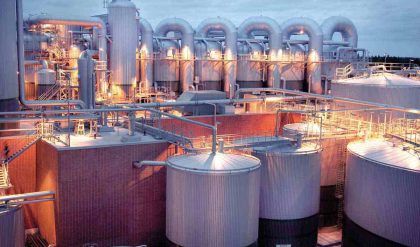Because the molecules of a liquid are in constant motion and possess a wide range of kinetic energies, at any moment some fraction of them has enough energy to escape from the surface of the liquid to enter the gas or vapor phase. This process, called vaporization or evaporation, generates a vapor pressure above the liquid. The Heat of Vaporization (also called the Enthalpy of Vaporization) is the heat required to induce this phase change.

Figure 11: Heat imparts energy into the system to overcome the intermolecular interactions that hold the liquid together to generate vapor.
Since vaporization requires heat to be added to the system and hence is an endothermic process, therefore ΔHvap>0ΔHvap>0 as defined:

Example 11
If a liquid uses 50 Joules of heat to vaporize one mole of liquid, then what would be the enthalpy of vaporization?
Solution
The heat in the process is equal to the change of enthalpy, which involves vaporization in this case
qtot=Δvap (2)
so
qtot=50J=Δvap (3)
So the enthalpy of vaporization for one mole of substance is 50 J.
The Enthalpy of Condensation



Comments are closed.